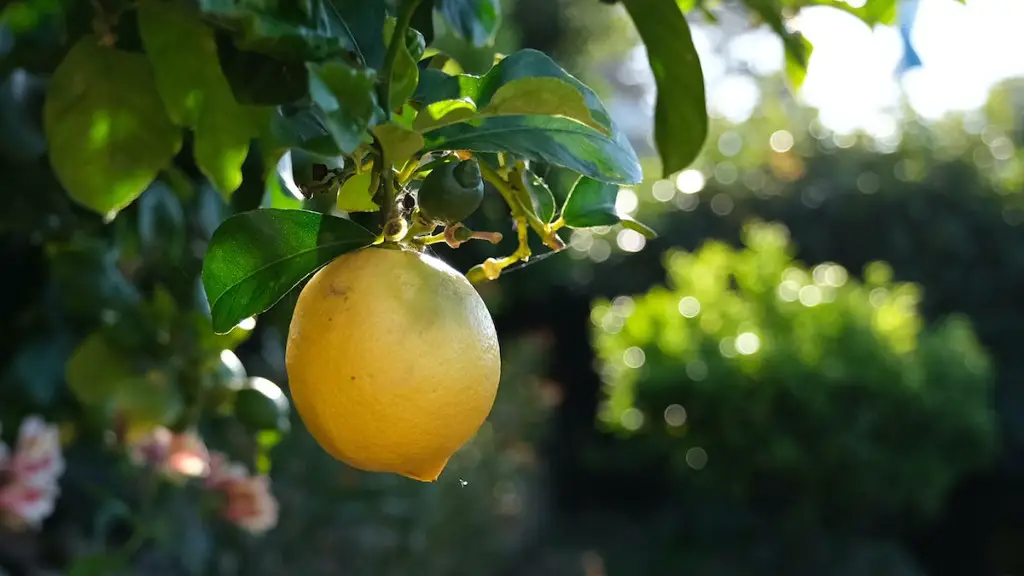Understanding how to care for your small lemon tree properly is vital for producing the sweet, juicy lemons you crave. Pruning, in particular, is key for maintaining healthy citrus trees. Here, we’ll cover the correct pruning methods for small lemon trees, so you can successfully keep, and even improve, yield.
To keep your small lemon tree healthy and producing quality fruit, proper pruning is essential. Pruning should be done twice a year: once in the fall, and once in the spring. Pruning helps maintain a tree’s shape and health, encourages new fruiting wood and keeps lemon trees from becoming too dense.
The best time for pruning your small lemon tree is during the early spring, when the tree is actively growing. Start by examining the canopy; you want to ensure the limbs are evenly spaced out throughout the top of the tree. The idea is to thin the tree, not make it look “bushy.” For every two shoots or branches, remove one.
When pruning, you want to remove smaller, weaker branches, as well as any branches that rub against the trunk or other branches. Removing stubs is also important, as these can disrupt the flow of the tree’s shape and steal energy from healthy parts of the tree. Always cut the branch at a 45-degree angle, as this will allow the tree to heal more quickly.
It’s important to also be mindful of the centers of trees; if there are too many branches growing in the interior, this can be harmful to your tree’s production. Remove branches that are growing towards the center, as this can disrupt the tree’s natural energy flow. Lastly, also remove any dead, diseased or broken branches.
When To Prune
Pruning should be done twice a year: once in the fall, and once in the spring. Pruning during the fall gives you more control over growth patterns, as there’s less to prune in the spring. Fall pruning will also help keep your tree’s shape for the next season, reducing the amount of pruning needed in the spring.
If you reside in an area where frost can be expected in the winter, pruning your small lemon tree during the fall will help prevent any frost damage from occurring. However, bear in mind that pruning your small lemon tree during the fall should be light pruning at best. Wait until the springtime to do any major pruning.
Consequences of Improper Pruning
Having too much or too little pruning can be detrimental to your small lemon tree. Too much pruning can stunt the tree’s growth and limit its ability to produce fruit, while too little pruning can cause branches to turn into thick, dense wood and make it hard for the tree to retain any energy.
Incorrectly cutting branches can also have a detrimental effect. If there are any bumps or rough edges on the branch after it is cut, this can create a large wound that might end up hurting the tree’s health, resulting in fewer fruits.
Occupational Pruning
Pruning not only helps maintain tree health, but also helps protect your home from any potential hazards from your tree. It is recommended that if any branches grow over your roof or out beyond the boundary of your property, have them pruned away to prevent any potential damages. Pruning your citrus tree for this purpose is known as occupational pruning.
By performing occupational pruning, you’re preventing any reckless branches from falling on your house and damaging it. Occupational pruning also helps maintain a desirable form and limits the amount of shading caused by the tree, so you can preserve your home’s aesthetic.
Tools Used For Pruning
Different types of tools are used depending on how much pruning you’re doing, and how thick the branches are. Pruners or shears are great for cutting smaller, thinner branches. Whilst lopping-shears are great for cutting nearly 3-4 cm thick branches. For larger branches, saws are the only way to prune them successfully.
It’s important to use tools that are well-maintained and sharp. Dull tools will struggle to cut through the branches, increasing the risk of tearing and resulting in more damage than necessary. Keep tools clean and disinfected to prevent any potential spread of diseases between trees.
Correct Pruning Techniques
There are a few correct techniques to bear in mind when pruning your small lemon tree: cut the branch at a 45-degree angle and use sharp tools that are well-maintained. That being said, remember that the goal of pruning is to improve the overall health of the tree, not just to produce fruits. By cutting away dead or damaged branches and ensuring good air circulation, you’ll be helping the tree’s overall health.
Thinning is another important practice when pruning your small lemon tree. As previously mentioned, this will ensure that your tree retains its natural shape, produce more healthy branches and help the tree to get enough sunlight. Lastly, it’s also worth noting that a little pruning can go a long way; don’t over-prune your tree.
Advantages of Pruning
Growth rate and fruit production of your small lemon tree can drastically improve when pruning is done correctly. Improvement in air circulation, as well as enhanced direct sunlight intake, can help fruits ripen faster. Additionally, pruning helps improve the overall health of the tree. Proper pruning allows for better absorption of nutrients and water from the soil to the tree’s roots.
Removing of dead or decaying branches helps keep unwanted pests away, as well as preventing diseases. The removal of any excess or overgrown branches helps give the tree space to expand, as well as allowing easier access for water, light and nutrients.
Safeguard Against Frost Damage
If you live in an area where frost is expected during the winter months, pruning your lemon tree during late fall can help protect it from potential frost damage. However, the focus during fall pruning should be on light maintenance and prevention of ice-buildup. Major pruning is best done in the spring, when the tree is actively growing.
You also want to ensure that any frost damage that may have occurred over the winter has been pruned away. This way, the tree is allowed to heal itself and recover faster, preventing any potential disease or fungi from invading the tree’s branches.
Clipping New Sprouts
When actively pruning your small lemon tree, be sure to prune away any new sprouts. This is a vital step that many people miss when pruning their tree. New sprouts usually grow from the lower regions of the tree; clipping them will help encourage the tree to concentrate its available energy reserves into more desirable fruits.
Additionally, keeping new sprouts trimmed will help the tree retain the desired shape and structure that the end-user was looking for. Lastly, clipping back new sprouts will help reduce competing too-short branches, allowing for better air circulation and improved light penetration into the tree’s canopy.
Considerations For Pruning
Whilst pruning is an essential practice for maintaining a healthy small lemon tree, there are some considerations to bear in mind. When pruning, you want to avoid damaging any new growth, and you want to ensure the tree will heal properly. Pruning too aggressively can put too much stress on the tree, so it’s important to strike a delicate balance.
Additionally, you want to remember that the pruning’s goal is to improve the overall health of the tree, not to just make it look better or produce more fruit. Particularly if you have a tree-dwarfing variety, you don’t want to prune too aggressively, as this can stunt the tree’s growth and limit your potential harvest.





